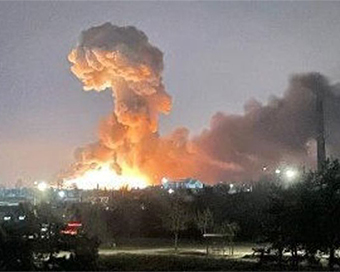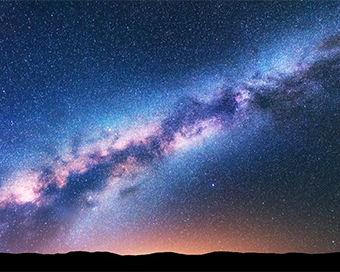Gallery
 PM Modi visit USA
PM Modi visit USA Only the mirror in my washroom and phone gallery see the crazy me : Sara Khan
Only the mirror in my washroom and phone gallery see the crazy me : Sara Khan Karnataka rain fury: Photos of flooded streets, uprooted trees
Karnataka rain fury: Photos of flooded streets, uprooted trees Cannes 2022: Deepika Padukone stuns at the French Riviera in Sabyasachi outfit
Cannes 2022: Deepika Padukone stuns at the French Riviera in Sabyasachi outfit Ranbir Kapoor And Alia Bhatt's Wedding Pics - Sealed With A Kiss
Ranbir Kapoor And Alia Bhatt's Wedding Pics - Sealed With A Kiss Oscars 2022: Every Academy Award Winner
Oscars 2022: Every Academy Award Winner Shane Warne (1969-2022): Australian cricket legend's life in pictures
Shane Warne (1969-2022): Australian cricket legend's life in pictures Photos: What Russia's invasion of Ukraine looks like on the ground
Photos: What Russia's invasion of Ukraine looks like on the ground Lata Mangeshkar (1929-2022): A pictorial tribute to the 'Nightingale of India'
Lata Mangeshkar (1929-2022): A pictorial tribute to the 'Nightingale of India' PM Modi unveils 216-feet tall Statue of Equality in Hyderabad (PHOTOS)
PM Modi unveils 216-feet tall Statue of Equality in Hyderabad (PHOTOS)Hockey India has announced a 54-member core probable squad for the upcoming senior men’s
- Satwik-Chirag return as BAI names 14-strong squad for BWF Sudirman Cup Finals 2025
- Men’s Sr Hockey Nationals to be played in division-based format from April 4
- Mensik denies Djokovic 100th title in Miami final
- KIPG: Son of a vegetable vendor, Bihar’s Jhandu Kumar eyes Worlds, 2028 Paralympics
- Hardik Singh credits hard work and team unity for receiving HI Midfielder of the Year award
Astronomers find why galaxies become dormant Last Updated : 23 Sep 2021 04:33:52 PM IST 
A team of astronomers have found the reason why early, massive galaxies turn inactive is because they run out of the cold hydrogen gas needed to make stars.
Star formation is one of the key ways that galaxies grow, and they're said to have gone quiescent when they cease forming stars.Using NASA's Hubble Space Telescope and the Atacama Large Millimeter/submillimeter Array (ALMA) in northern Chile, the team from the University of Massachusetts, Amherst detected six such massive galaxies that were dead.While astronomers have known that early, massive galaxies turn quiescent, but until now, no one knew why."The most massive galaxies in our universe formed incredibly early, just after the Big Bang happened, 14 billion years ago," said Kate Whitaker, Assistant Professor of astronomy at the University of Massachusetts, Amherst."But for some reason, they have shut down. They're no longer forming new stars," she added.Her team explored what happened to all the cold gas in these galaxies so early on.Hubble pinpointed where in the galaxies the stars exist, showing where they formed in the past. By detecting the cold dust that serves as a proxy for the cold hydrogen gas, ALMA showed astronomers where stars could form in the future if enough fuel were present.The findings are published in the journal Nature.These six galaxies lived fast and furious lives, creating their stars in a remarkably short time. Why they shut down star formation so early is still a puzzle.Whitaker proposes several possible explanations: "Did a supermassive black hole in the galaxy's center turn on and heat up all the gas? If so, the gas could still be there, but now it's hot. Or it could have been expelled and now it's being prevented from accreting back onto the galaxy. Or did the galaxy just use it all up, and the supply is cut off? These are some of the open questions that we'll continue to explore with new observations down the road."Further, the team stated that these sorts of dead galaxies don't appear to rejuvenate, even through later minor mergers and accretions of nearby, small galaxies and gas. Gobbling up things around them mostly just "puffs up" the galaxies.If star formation does turn back on, Whitaker described it as "a kind of a frosting".About 11 billion years later in the present-day universe, these formerly compact galaxies are thought to have evolved to be larger but are still dead in terms of any new star formation.IANS New York For Latest Updates Please-
Join us on
Follow us on








172.31.16.186







